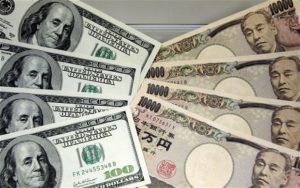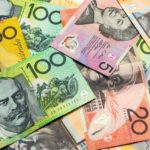 Yesterday’s trade saw USD/JPY within the range of 120.86-121.75. The pair closed at 121.22, dipping 0.07% on a daily basis and marking the first drop in the past five trading days. The daily high has been the highest level since August 24th, when the cross registered a high of 122.04.
Yesterday’s trade saw USD/JPY within the range of 120.86-121.75. The pair closed at 121.22, dipping 0.07% on a daily basis and marking the first drop in the past five trading days. The daily high has been the highest level since August 24th, when the cross registered a high of 122.04.
At 7:25 GMT today USD/JPY was down 0.64% for the day to trade at 120.45. The pair overcame the lower range breakout level (S4), as it touched a daily low at 120.28 at 7:29 GMT. Support may be received within the 120.00-120.15 area.
Today the cross may be influenced by a number of macroeconomic reports as listed below.
Fundamentals
United States
Manufacturing PMI by the ISM
Activity in United States’ manufacturing sector was probably little changed in August, with the corresponding manufacturing PMI coming in at a reading of 52.6, according to expectations, down from 52.7 in July. If so, this would be the lowest PMI reading since April, when the gauge was reported at 51.5. The New Orders Index came in at 56.5 in July from 56.0 in June. The sub-gauge of production was reported at 56, advancing from 54.0 in the preceding month. The index of employment slid to a value of 52.7 in July from 55.5 in June, indicating that employment levels rose but at a slower rate compared to June. The gauge of inventories of raw materials dropped to 49.5 in July from a reading of 53.0 in the previous month.
The Manufacturing Purchasing Managers’ Index (PMI) is a compound index, which represents manufacturing activity in 18 different industries. It is comprised by four equally-weighted components: seasonally adjusted employment, seasonally adjusted production inventories, seasonally adjusted new orders and supplier deliveries. The index is based on a survey of 300 purchasing managers.
Participants can either respond with “better”, “same”, or “worse” to the questions about the industry, in which they operate. The resulting PMI value is measured from 0 to 100. If the index shows a value of 100.0, this means that 100% of the respondents reported an improvement in conditions. If the index shows a value of 0, this means that 100% or the respondents reported a deterioration in conditions. If 100% of the respondents saw no change in conditions, the index will show a reading of 50.0. Therefore, readings above the key level of 50.0 are indicative of expanding activity in the sector of manufacturing. In case, however, the PMI slowed down more than anticipated, this would have a strong bearish effect on the greenback. The Institute for Supply Management (ISM) is to release the official reading at 14:00 GMT.
Safe Haven Boosted
Demand for the Japanese currency was higher on Tuesday, after it became clear that activity in China’s sector of manufacturing contracted for the first time last month since February. A government report revealed the corresponding manufacturing Purchasing Managers’ Index slid to a 3-year low at a reading of 49.7 in August from 50.0 in July. A separate private report showed the contraction in manufacturing activity continued for a sixth straight month, with the Caixin China General Manufacturing PMI coming in at a final 47.3, up from a preliminary reading of 47.1, but down from 47.8 in July.
Bond Yield Spread
The yield on Japanese 2-year government bonds went as high as 0.013% on August 31st, after which it slid to 0.012% at the close to show no change compared to August 28th.
The yield on US 2-year government bonds climbed as high as 0.743% on August 31st, or the highest level since August 7th (0.749%), after which it fell to 0.739% at the close to add 1.5 basis points (0.015 percentage point) for the day. It has been a fifth straight trading day of gains.
The spread between 2-year US and 2-year Japanese bond yields, which reflects the flow of funds in a short term, widened to 0.727% on August 31st from 0.712% on August 28th. The August 31st yield spread has been the most notable one in more than two months.
Meanwhile, the yield on Japans 10-year government bonds soared as high as 0.385% on August 31st, after which it slid to 0.381% at the close to lose 0.005 percentage point compared to August 28th, while marking a second straight day of decrease.
The yield on US 10-year government bonds climbed as high as 2.220% on August 31st, or the highest level since August 19th (2.230%), after which it slipped to 2.214% at the close to add 3 basis points (0.03 percentage point) compared to August 28th.
The spread between 10-year US and 10-year Japanese bond yields widened to 1.833% on August 31st from 1.798% on August 28th. The August 31st yield difference has been the most significant one since August 5th, when the spread was 1.872%.
Daily and Weekly Pivot Levels
By employing the Camarilla calculation method, the daily pivot levels for USD/JPY are presented as follows:
R1 – 121.30
R2 – 121.38
R3 (range resistance – green on the 30-minute chart) – 121.46
R4 (range breakout – red on the 30-minute chart) – 121.71
S1 – 121.14
S2 – 121.06
S3 (range support – green on the 30-minute chart) – 120.98
S4 (range breakout – red on the 30-minute chart) – 120.73
By using the traditional method of calculation, the weekly pivot levels for USD/JPY are presented as follows:
Central Pivot Point – 120.07
R1 – 123.68
R2 – 125.64
R3 – 129.25
S1 – 118.11
S2 – 114.50
S3 – 112.54





